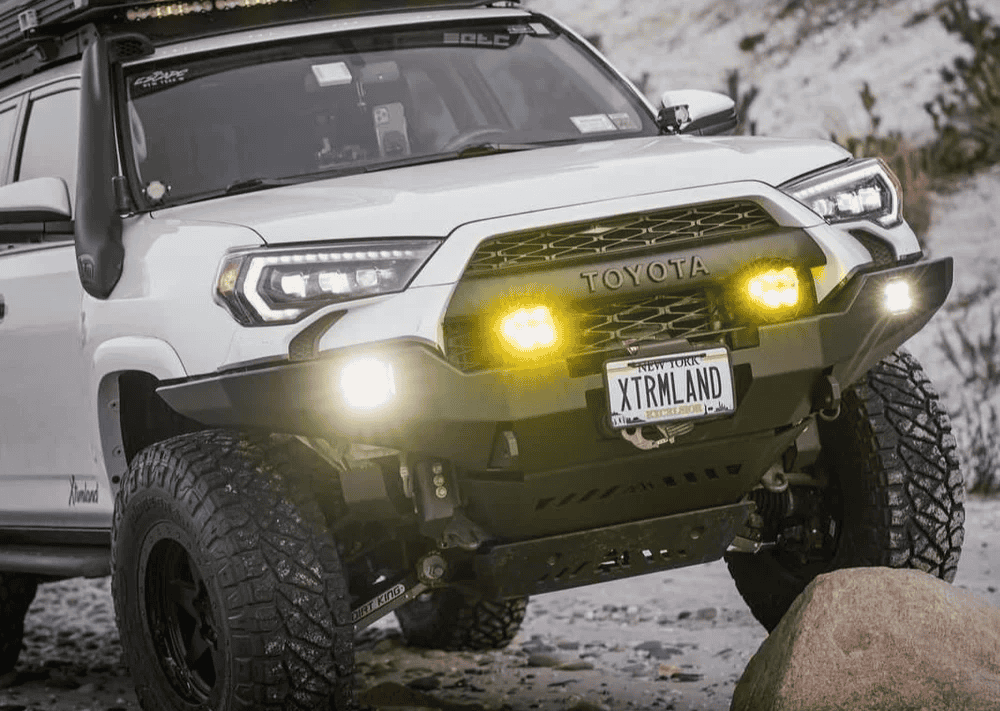Overland Vehicles

A survival motorhome is built to stay functional when roads disappear and services vanish. Think armored structure, insulated composite walls, sealed storage, and redundant systems that keep power, water, and heat online for weeks. The GXV Hilt often comes up as a reference point because it represents the expedition mindset: stout chassis, high clearance, protective body, and systems that tolerate cold, heat, and vibration. Compared to a typical camper, the survival approach prioritizes reliability, serviceability, and autonomy over slide outs or campground amenities. The result is a rig designed to cross deserts, climb forest roads, and wait out storms without hookups.
Under a survival motorhome, you will find serious running gear. Low range transfer cases, locking differentials, proper gear ratios, and torque rich engines matter when you leave pavement. Clearance is only useful when the frame, axles, and steering components are protected with skid plates and smart routing. Payload and gross weight ratings dictate how much water, battery, and spares you can carry; overload a chassis and handling suffers. Tire choice is critical too, with all terrain rubber sized to support the weight while maintaining sidewall strength and repairability in the field.
Class C motorhomes 4x4 blend a van or truck cab with a coach body, then add traction and suspension upgrades. Many begin life as rear drive models and receive 4x4 conversions, or they start on factory four wheel drive platforms. Expect heavier springs, tuned shocks, and larger tires to manage the mass of the house. The body should be reinforced where it meets the frame to resist twist on uneven surfaces. Inside, appliances and cabinets need secure mounts and latches that will not spring open on washboard or during steep departures.
Off grid travel rises and falls on energy. Lithium batteries coupled with solar, high output alternator charging, and efficient inverters keep fridges, induction tops, and communications running. Diesel air heaters and well sealed ducting make cold nights manageable while sipping fuel. Air conditioning off battery alone is possible for shorter windows with enough capacity and smart management. Insulation, double pane windows, and thermal breaks help the cabin stay comfortable without wasting power. Water systems benefit from filtration, UV sterilization, and freeze protection for true four season use.
An off road class C RV gives more living space than many expedition trucks, but that volume brings height and width. Watch for tree tunnels, breakover angles on humps, and tight switchbacks where long wheelbases struggle. Approach and departure angles improve with bumper and rear step choices, but hitch placement and storage pods can become strike points if not planned. Weight management is a constant theme: distribute loads low and centered to reduce sway and stress on mounts. Recovery planning matters as well, from onboard air and traction boards to safe jack points and winch rated anchor solutions.
Layouts that shine on rough tracks prioritize simplicity and securement. Use positive latching hardware, soft storage that will not rattle, and tie downs for heavy goods. Galley zones benefit from flush mounted cooktops and sinks with covers that double as work surfaces. Wet baths keep water where it belongs and are easier to clean after muddy days. Fixed beds over a gear garage create space for bikes or tools while preserving quick sleep setup during weather snaps.
The GXV Hilt often anchors this conversation because it embodies a survival motorhome philosophy. Its construction aims to reduce flex between chassis and house, which preserves seals and cabinetry on corrugated tracks. System redundancy enables longer routes between towns, and the overall package targets expedition grade durability. Not everyone needs that level; plenty of travelers are better served by an off road class C RV tweaked for forest roads and remote trailheads. The right path is the one that matches your terrain, time away from services, and appetite for maintenance and cost.
Costs scale with autonomy and complexity. Bigger tanks, higher capacity batteries, and reinforced bodies add weight and price. Service access is crucial; make sure consumables are reachable and parts are common where you plan to travel. Driver training pays off quickly, from tire repair and recovery basics to reading terrain and managing momentum. A test loop on local dirt will teach more than a spec sheet ever can.
If you are mapping a survival motorhome playbook or outlining upgrades for an off road class C RV, clarity on use case comes first. List your longest dry camp target, coldest and hottest temps, and the surfaces you will routinely drive. That snapshot informs chassis choice, conversion needs, energy storage, and interior structure that will hold up long term.
OZK Customs builds around real world routes rather than catalog assumptions. Our team designs overland systems that fit your payload, power budget, and comfort goals without adding fluff. Explore our Overland rigs to see how we approach capability, then review a Custom overland upfit path tailored to your platform. Want to understand our process and standards before you commit? Start with Why choose OZK.
When you are ready, we will align your terrain, range, and layout with a build plan that respects weight, serviceability, and comfort. From power architecture to suspension tuning, every choice supports safe travel and calm nights off grid. Fill out the form and we will turn your notes into a clear scope, timeline, and budget.
Ready to build a true go anywhere rig? Tell us your terrain, range, and must haves, and OZK Customs will spec a Class C 4x4 or overland platform that fits your budget and timeline. Submit the form to start a design consult and get a clear path to delivery.
ADDRESS:
6159 E Huntsville Rd, Fayetteville, AR 72701
PHONE:
(479) 326-9200
EMAIL:
info@ozkvans.com